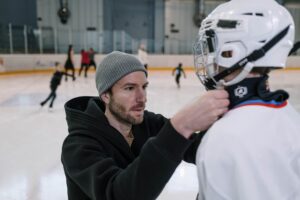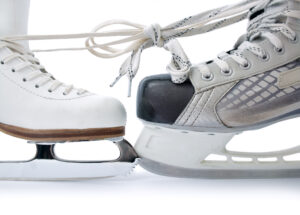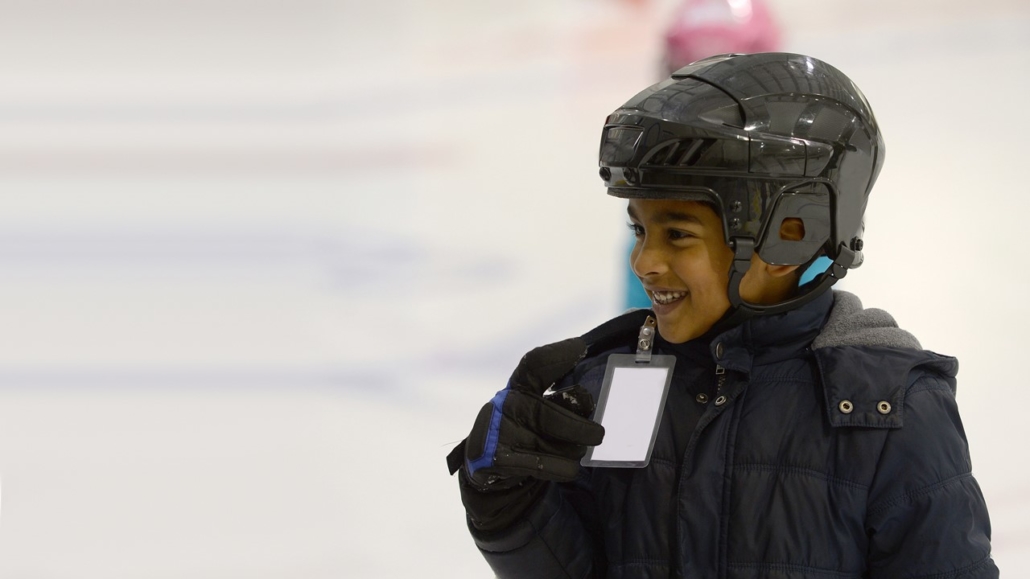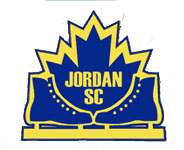Skating FAQ
Learning a new sport comes with many questions and we are happy to answer them all for you!

Whether your child is interested in learning to skate to continue into figure skating, hockey, speed skating or just to have fun – the Jordan Skating Club is the place to be. We are here to help answer any and all questions you may have specifically about the club, program or even the sport itself!
The following is a list of the most frequently asked questions we receive.
Questions
Jordan Skating Club’s
Frequently Asked Skating Questions
How do I know what level my child should be registered in?
If this is your child’s first year skating with the Jordan Skating Club, don’t worry! We will assess your child on the first day of lessons and place him or her in the appropriate group. You will notice that the skaters have coloured dots on their name tags, showing their group. We continue to assess our skaters to ensure they are learning proper techniques and skills and are being challenged to be able to progress to the best of their abilities.
Why do I need a Skate Canada membership?
Skate Canada is our parent organization. Membership is mandatory for all skaters, board members and coaches. The membership provides necessary insurance coverage, Safe Sport fees, quality assurance, access to qualified NCCP certified professional coaches, test certificates and the peace of mind that the program adheres to the highest Skate Canada standards. Anyone wishing to participate in either our Parent & Tot program or Sunday Practice Time will require a Skate Canada membership. Former skaters who wish to attend Ticket Ice sessions also need a current Skate Canada membership.
What should my child wear for CanSkate?
When first starting to learn how to skate, ‘proper skating attire’ is a matter of safety, warmth and movement:
- Snow suits are not suggested. Although they keep the skater warm, they limit movement, and often the fabric in these suits is so slippery that young skaters just can’t get back up after a fall.
- Layering is ideal. A pair of Long Johns or tights under track pants often works well. And consider some combination of t-shirt, sweater, sweatshirt, jacket/vest for upper body warmth.
- Warm mittens or gloves are a must.
- Long hair should be pulled back or in a pony tail so the skater can focus and see everything around him/her.
What is ticket ice?
Ticket Ice (Wednesdays from 4:30 – 5:30 p.m.) is ice provided by the Town of Lincoln specifically for figure skating practice. Skaters wanting to use this ice must register and pre-pay through the Town’s website. A Skate Canada membership is required.
What is Sunday Practice Time?
Sunday Practice Time is an extra session of ice available to all of our registered skaters at no additional cost. It’s a great time for our CanSkate, Parent & Tot and STARSkate members to practise new skills and/or book private lessons. For safety, the following restrictions apply during Practice Time as they can be dangerous to other skaters on the ice:
• NO double jumps
• NO camel spins
• NO dances above Star5
• NO skills above Star5
• NO Games of tag, falling down and sliding etc.
What is your refund policy?
The Administration fee ($25/family) is non-refundable, as is the Skate Canada membership fee which is paid directly to Skate Canada. Pro-rated refunds will be issued until the third week of skating. In the event of unforeseen circumstances (accident, illness, an unexpected move etc) please contact the club to discuss such a special situation.
Helmets 101

Skate Canada requires all skaters wear a CSA approved hockey helmet until they have passed Badge 5, after which skaters can choose whether to continue wearing one or not at parent/coach discretion. Any adults in our Parent & Tot group who are not competent with skating forward, backward and stopping also need to wear a helmet. Beginner skaters do require a cage on their helmet. Bicycle helmets CANNOT be worn and are prohibited on the ice. A hockey helmet is designed to protect the head with repeated impacts. A bicycle helmet is designed to offer protection in one significant impact.
What kind of skates should you buy?

One of the biggest concerns when you start a sport is equipment. Proper equipment is essential for becoming skilled in most sports; recreational skating, power skating and figure skating are no exceptions.
Children can learn how to skate in either hockey or figure skates. Figure skates tend to offer better support because the boot comes up higher over the ankle, the blade is lower giving better balance and the higher heel encourages a more upright stance. However, on the other hand, when a skater starts out in hockey skates, they do not get into the bad habit of “toe-pick pushing.”
What is the most efficient way to lace and tie my skates?
Make sure your socks are pulled up all the way – wrinkled socks are uncomfortable and can even cause blisters. Next, centre the tongue of the boot and pull it up. Lacing should be loose enough over the toe area to allow the toes to wiggle. Tie the laces over the instep fairly tight to give maximum support. From here on to the top of the boot, the lacing should be snug, but not too tight, so that the ankle can flex and extend comfortably. When lacing the hooks on figure skates, it’s best to go ‘across-down-around’ to avoid pulling the hooks out. Then tie a secure double bow and tuck in the ends of your laces (or tie the loops of the bow together). You should never wrap the laces around the top of your boot.
How do I know if skates are the right fit?
Don’t buy skates for your child to grow into! Skates will generally run one size smaller than your street shoes. If the skate is too big, the arch will not be in the right spot and the toe will also be too far forward, causing the skater to trip. Blades are proportioned for balance, and a large size skate may cause the child to go over onto his/her ankles. Here are a couple of quick checks for fit:
- Lace up the boot, but hold down the blade. Ask the child to try and lift their heel. If they can, try a size smaller
- Have your child sit on a chair, with the skate undone. Tell them to push their toes forward as far as they can. When they bend forward at the knee, there should only be enough space for a pencil (or one finger) to slide behind their heel.

Do you still have skating questions?
Contact us today to answer any other questions you may have – we are always happy to help!
Skates 101
One of the biggest concerns when you start a sport is equipment. Proper equipment is essential for becoming skilled in most sports. Recreational skating, power skating and figure skating are no exceptions. The following are some tips to picking out and maintaining your skates:
- We encourage our skaters to wear lace up skates. Good equipment often ends up in the skate exchange of local shops or on social media buy and sell pages like Niagara Figure Skating Mom Swap and Sell.
- Often times it is better to buy a pair of high quality second hand skates than to spend the same amount of money on a new pair of lower quality. This is true as long as there are no creases on the inside of the boot. Creases on the inside mean that the counter of the skate is broken down and will not provide adequate support.
- Blades need to be sharpened on a regular basis (about every 30 hours for most recreational skaters). If you do any outdoor skating in the winter, they will need to be sharpened more often.
- Wear hard plastic skate guards when you are walking on the concrete areas of the arena. Even a couple of steps can take the edge off of a blade. The rubber floor in the dressing rooms and hallways are safe to walk on without guards.
- Always dry skate blades completely – an old kitchen towel is perfect for this.
- Store your skates without the plastic guards as they will trap any remaining moisture and cause rust to form on the blades. Cloth blade covers are available at many skating and sports stores. These help to absorb any remaining dampness and keep the blades from banging together.
Want to improve your skating skills?
Join the Jordan Skating Club today – learning how to skate has never been so fun!
